Northern Lights in Iceland – Where and How to See the Aurora
When planning a trip to Iceland, one must-do at the top of most travelers’ lists is to see the Northern Lights.
This gorgeous natural light show has been a marvel and major tourist attraction for centuries, with people from all over the world journeying to the region by the hundreds of thousands each year. Everyone hopes to catch a stunning light show, but some aren’t so lucky.
What are the Northern Lights and how can you see them for yourself? If you’re planning a visit to Iceland, our guide has everything you need to have the best chances of viewing a spectacular show.
What Are the Northern Lights?
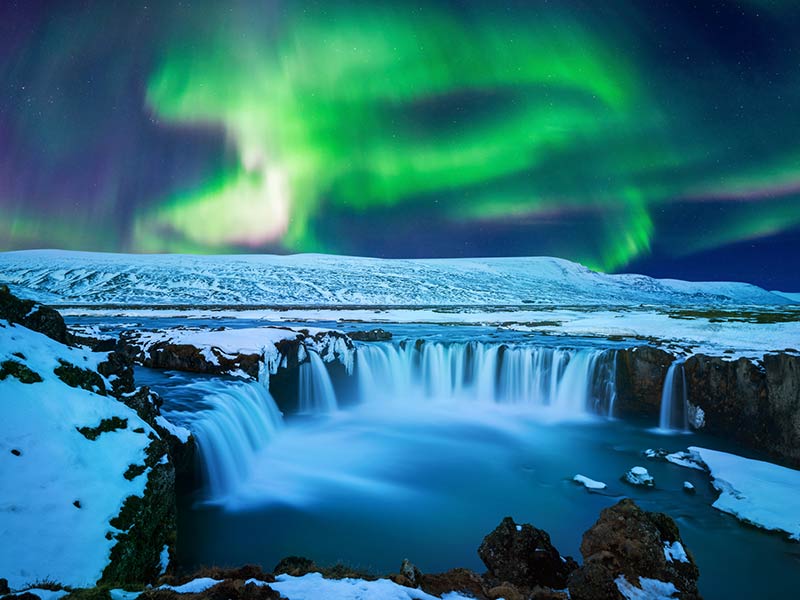
The bright, dancing colors of the Northern Lights, or Aurora borealis, are as mysterious to some as they are beautiful. Shades of red, blue, green, yellow, and violet can be seen in the night sky, enchanting viewers.
What causes this natural phenomenon?
When gaseous particles in Earth’s atmosphere collide with charged particles released by the sun’s atmosphere, light is emitted. Usually, these particles are usually deflected by Earth’s magnetic fields, but these fields are weaker at the poles, allowing the particles to enter the atmosphere.
See also: What is the Golden Circle?
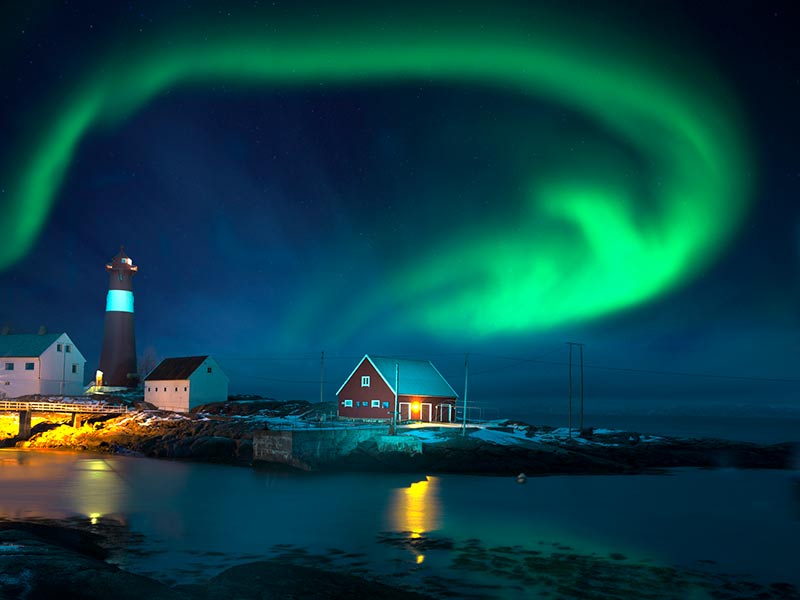
Different colors are seen based on the type of particles that are involved in this collision.
When you see a pale yellow color – the most common color seen in the Northern Lights – that’s oxygen particles low in the atmosphere, about 60 miles above Earth’s surface. Higher-altitude oxygen produces the rare all-red aurora. And blue or purple-red auroras are the result of nitrogen particles.
The Northern Lights in Folklore

Before there was an obvious scientific explanation for the Northern Lights, people from a variety of cultures came up with their own explanations.
See also: Iceland in March: 5 Things You Should Know
In Norse mythology, people believed viewing the Aurora borealis meant they were getting a glimpse of the Valkyries, the female figures of mythology who decided who lived and died in battle and who transported the dead to the afterlife.
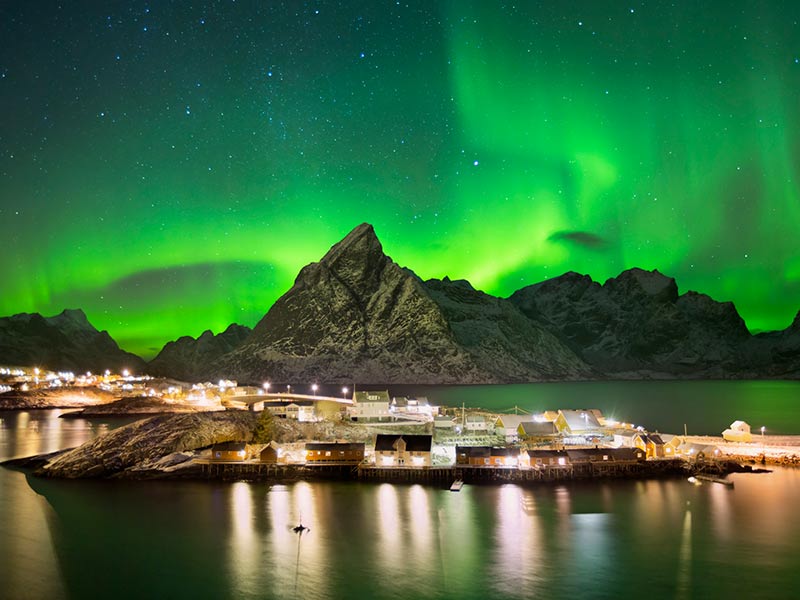
Some Native American groups believed the Northern Lights were the spirits of the dead. The brighter the lights glowed, the happier the spirits were.
They also have been considered omens, notably in Europe and North America.
Medieval Europeans thought being able to see the Northern Lights was an omen of dark times ahead. On the other hand, Confederate soldiers at the Battle of Fredericksburg during the Civil War took them to mean they were going to be victorious.

While the Aurora borealis may look like magic, it’s just, plain science in action.
Where Can the Northern Lights Be Viewed?
The Northern Lights have been viewed as far south as New Orleans, Louisiana, under the right conditions, but the closer you are to the North Pole, the better your chances of catching a glimpse.
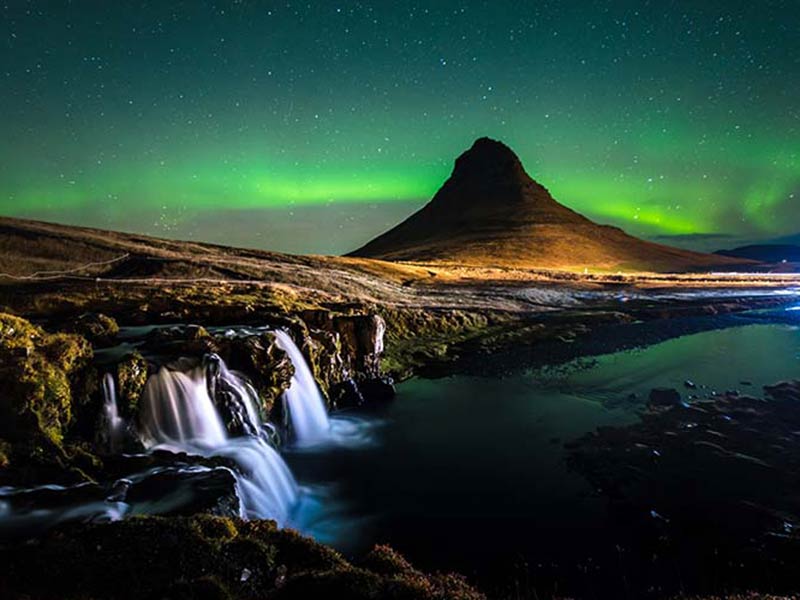
Popular places to view the Aurora borealis include the northern Scandinavian countries, Iceland, and Greenland, which are close enough to the Pole to make regular viewing possible.
When Can the Northern Lights Be Seen?
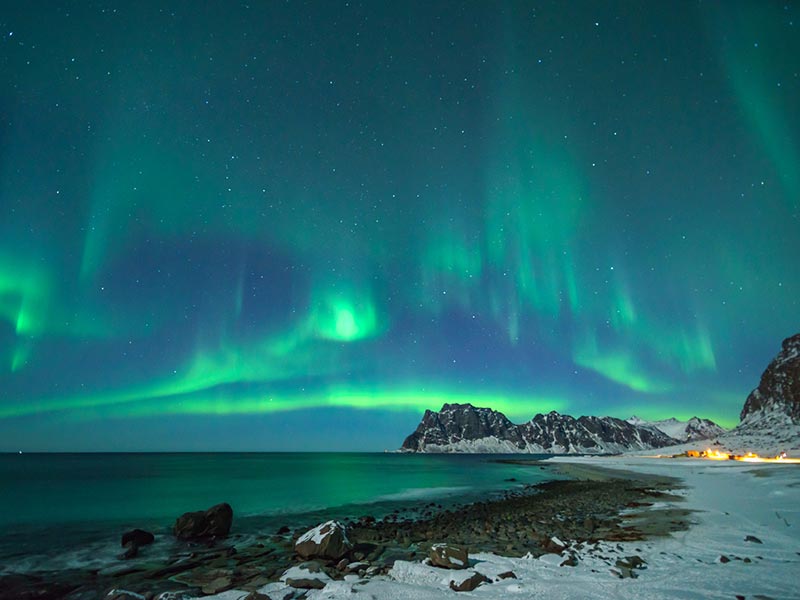
In order for you to see the Northern Lights, conditions have to be just right.
Some things to consider when planning a trip to see the Aurora borealis include:
- They are visible between September and April.
- Pick a night that is as dark as possible. A full moon, for example, will dim the effect of the aurora.
- Get as far away from a city as possible, as light pollution impacts the view.
- The night should be clear, with little to no cloud cover.
- There must be enough solar activity for the aurora to be visible.
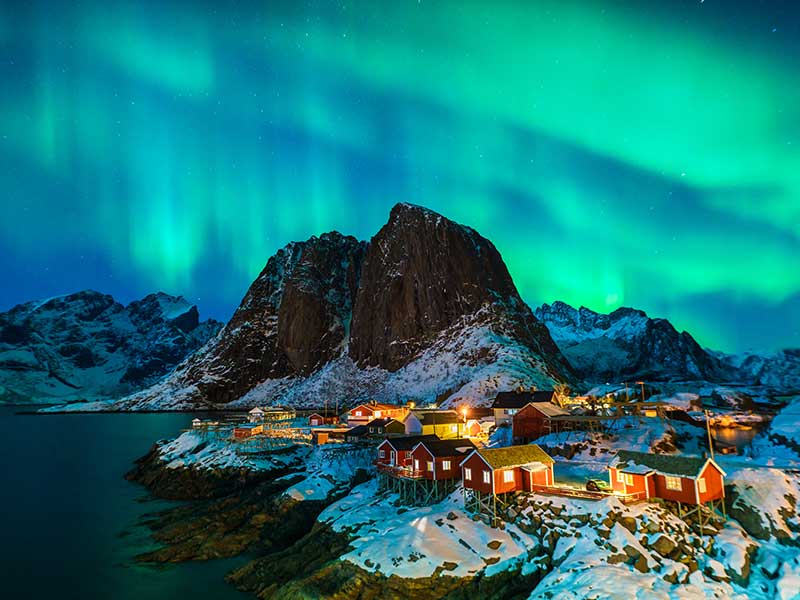
Some of the conditions are easy to plan your trip around, such as the time of year, the phase of the moon, and your physical location.
You can check resources, such as Iceland’s aurora forecast and cloud-cover forecast, when deciding when to schedule your viewing, but, like weather forecasts, it’s difficult to predict exact conditions the farther out you’re planning.

One condition that’s rumored to impact your ability to view the lights is temperature. Some believe that the colder it is, the more brilliant the show.
However, this isn’t true and, on the contrary, making the trip to see the lights in warmer temperatures will make the whole experience more enjoyable. Rather than shiver for a few minutes before retreating to your vehicle, wouldn’t you like to be able to stand and spend some time taking in the show?
How Can I Increase My Chances of Seeing the Northern Lights?
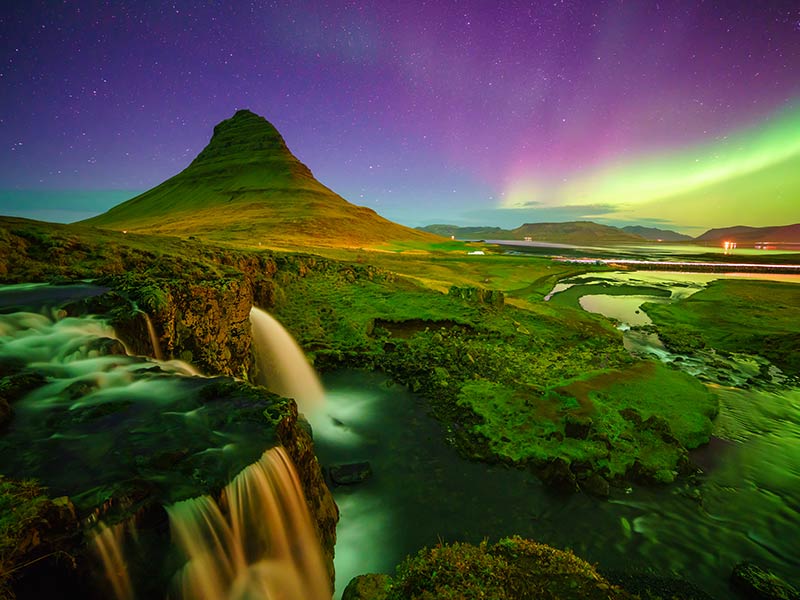
No matter how carefully you plan and how right the conditions may seem on paper, you could get out to your viewing site and not see the Aurora borealis.
To increase your chances, there are a few things you can do:
1. Extend Your Trip
If you’re planning to just stay in the area near the Northern Lights for a few days, your chances of seeing them are lower than if you were to plan a longer trip. It’s pure statistics; the longer you remain near the best viewing spots, the better your chances are for catching them.
2. Follow the Darkness
The more dark it is, the better your chances of seeing the lights and of getting a brilliant show. To increase your chances of seeing an aurora, try to plan your trip – or at least a portion of it – to an area that sees a larger amount of darkness each night.
More northern locations, such as the Westfjords and north Iceland, spend more of their evenings in darkness, increasing your chances.
3. Take a Tour
The people who give guided tours of the Northern Lights are experienced at finding the right conditions and the right spots for viewing. By tagging along on a tour, you benefit from all their experience rather than relying on your own guesswork.
4. Camp out
If you’re visiting during September or October, consider taking a tent out into a faraway, open spot and camp out for a night or two. Being under the stars for the entire night dramatically raises your chances of catching a glimpse.
5. Stay up Late
Unfortunately, it’s unlikely you’ll be able to see the Northern Lights and still be in bed at 10 o’clock. The later you stay up – especially if you pair this tip with camping out – the greater your opportunities for seeing the Aurora borealis.
Don’t forget to take a nap the afternoon before you set out so you don’t accidentally doe of just before the show starts!
How Can I See the Northern Lights in Iceland?
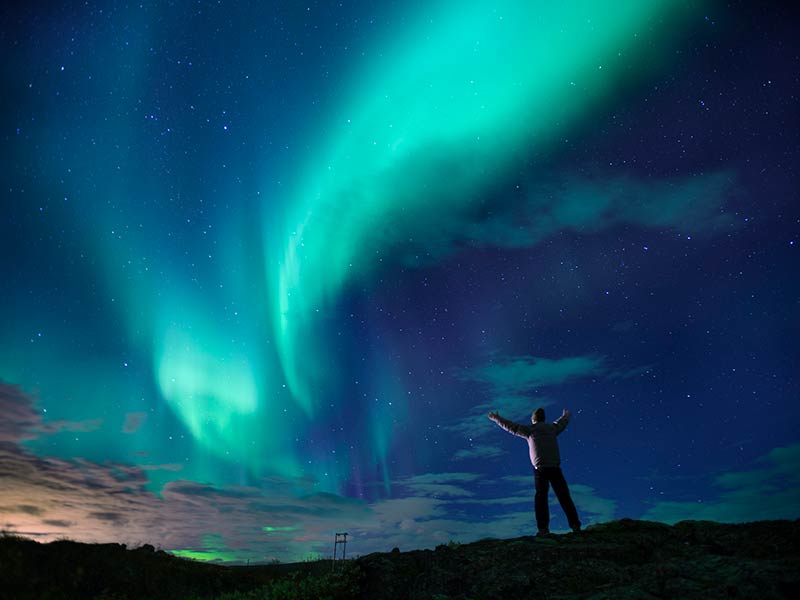
Regardless of when you visit or what the weather conditions turn out to be, you have a wide variety of options for actually viewing the lights.
Here are a few common choices:
Seeing the Northern Lights from a Town

For the budget-conscious, the most attractive option often is viewing the Northern Lights from the town you’re staying in.
Popular spots to stay and view the aurora include Reykjavík in Iceland (most notably the Seltjarnarnes).
Some benefits of seeing the lights from the town you’re staying in include:
- It’s less expensive. Booking a car or joining up with a tour aren’t inexpensive. If you’re pinching your pennies on your trip, it’s attractive to locate yourself in a city where you can see them.
- It’s more convenient. When you’re planning to view the lights from the place you’re already staying, the farthest you may have to go is across town. This is much more convenient for anyone with children, older travelers, or people who want to pack in a whole bunch of sightseeing to their days.
- More people. Part of the joy of traveling is meeting new people. If you’re gathered together in a large group looking at the Aurora borealis, you may strike up some conversations and make new friends.

Viewing the lights from a city isn’t without its drawbacks, however, including:
- More light pollution. If you’re in a city, you’re going to have more light spilling into the night from homes and businesses. This can decrease the effect of the light show, which may lead to a less-than-spectacular experience.
- More noisy. Being around people and traffic increases the noise pollution. For many, viewing the Northern Lights is a moving experience, and hearing cars honking can ruin that.
- More people. Just as being around more people can be a pro of seeing the lights in a city, it can also be a con. If you’re looking for a private, relaxing experience, you might not find it in the midst of a crowd.
- Fewer viewing options. When you’re in a city, your options of space for viewing are far more limited than if you were in a more open area. If there’s cloud cover, or if the lights are visible from a different angle than where you’re currently located, you may not be able to get a good view.
Taking a Tour
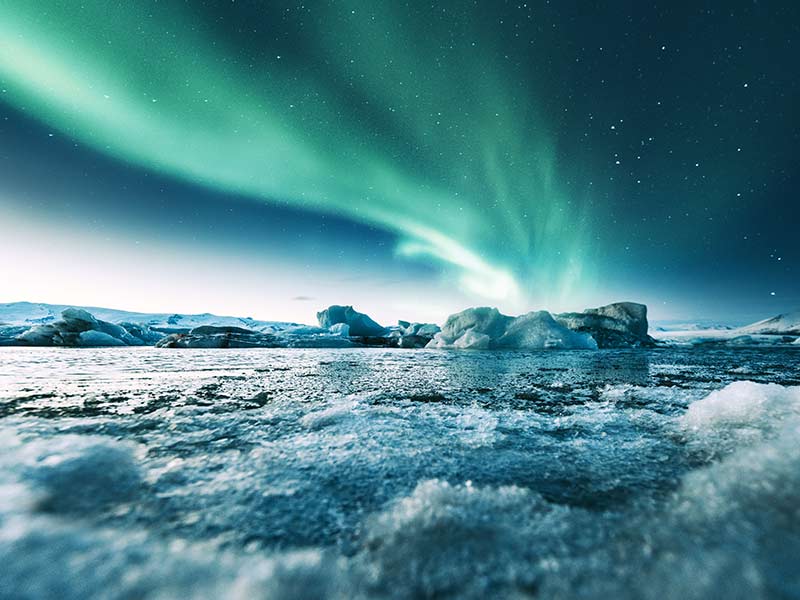
Another option for viewing the Northern Lights is to take a tour.
There are all sorts of touring options, depending on where you’re starting from. You can find large group tours, small group tours, and private tours. Tours run regularly during the whole viewing season.

The people who book and conduct these tours want to make sure you have the best possible experience, so they can be cancelled if conditions are unfavorable. On the plus side, though, you will be given the option to rebook at no extra charge.
Some positive points to booking a guided tour include:
- You’re with a pro. Guides on tours to view the Aurora borealis have seen them many times, under many conditions. Your guide will be able to take you to a great viewing spot, give you tips for taking photographs, and move to find a better view if needed.
- Get around better. Road conditions can be unpredictable, especially during the winter months. On a tour, you’re being driven around with someone familiar with the roads and how to drive them if things get rough.
- See unusual landscapes. Most guides are natives to the area where they give tours, and they know all the out-of-the way spots you may not find otherwise. You’ll make great memories and probably get some fabulous pictures.
- Get the best conditions. Tours are cancelled if the conditions aren’t right for viewing the lights. If your tour soldiers on, you know you are much more likely to see a show than if you were going on your own.
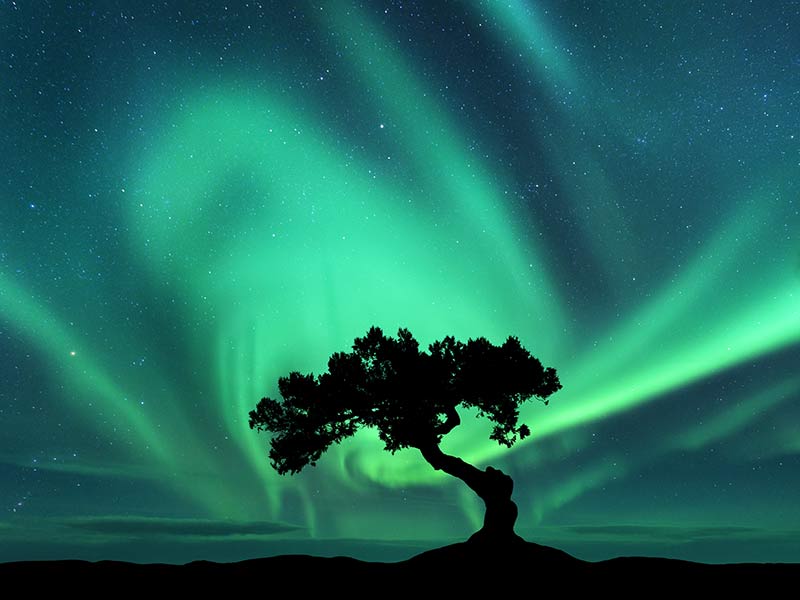
Tours do have their drawbacks, however, such as:
- They’re expensive. It isn’t cheap to pay someone to take you to look at the Northern Lights, so a tour may not be an option if you’re on a budget.
- Go where the group goes. For those that are still looking for the tour experience but don’t want a spendy private tour, a bus tour may be an option. These tours, however, mean you’ll be with a group of other people, which may not provide you with the solitary, quiet experience you’d hoped for.
- Limited landscapes. When you’re on those larger bus tours, the bus can’t go to certain locations due to its size. This can limit the views you may see, and may decrease your chances of seeing the lights altogether in the event of cloud cover.
Driving Yourself
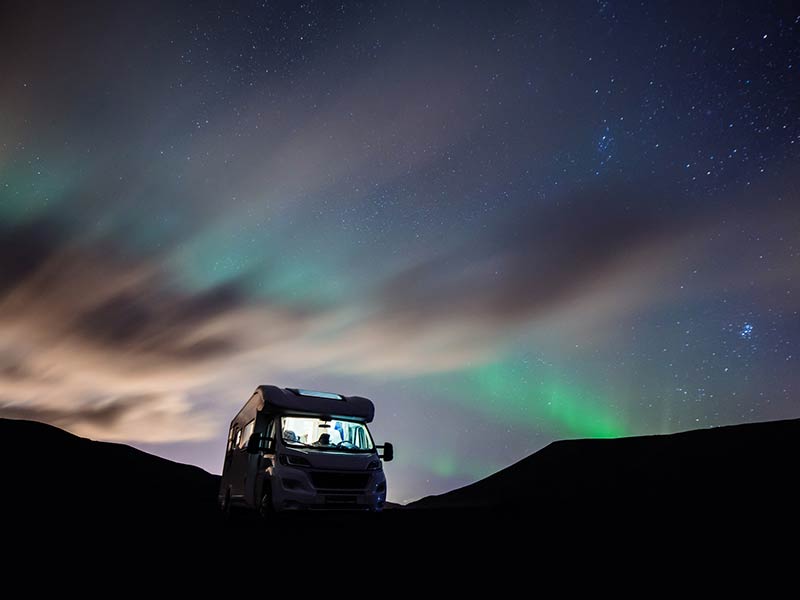
This option is perfect for the lone wolf traveler, the one who wants to go off on an adventure on their own and see the sights.
If you have a driver’s license with English characters – it can be written in a language other than English but not in a different script – you can rent a car. This option lets you go where you want to go, when you want to go, and makes you the most flexible and mobile of all the Northern Lights viewing options.
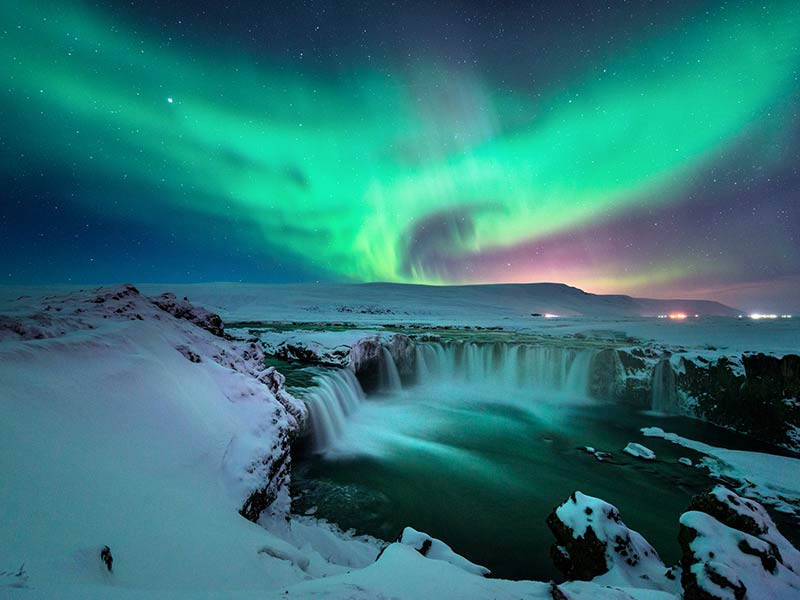
In September, October, and April, the roads in much of the region are largely clear of ice and snow, making travel relatively easy. But from November through March, ice, snow, and wind can make travel on unfamiliar roads dangerous.
When looking for a car to rent, choose one with four-wheel drive. Also, before setting out, check the road conditions and weather report so you aren’t heading into a snowstorm unaware.
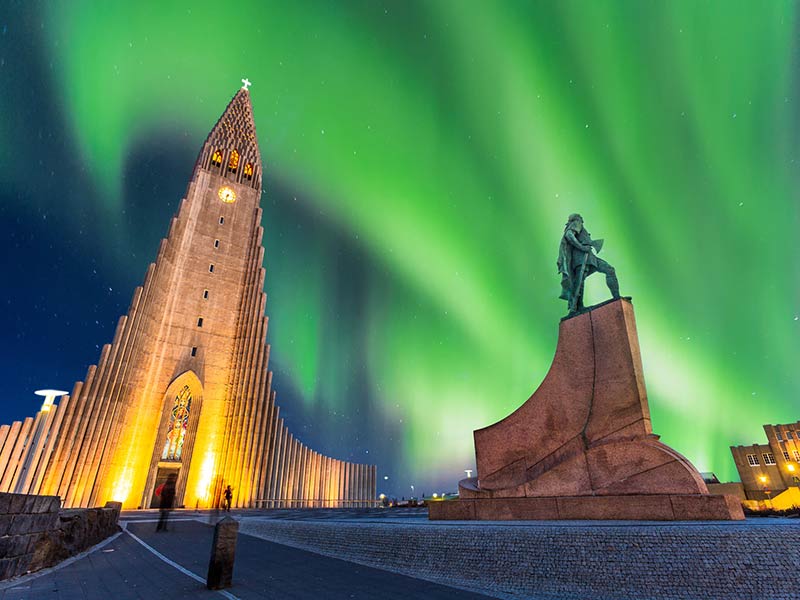
There are a variety of benefits to driving yourself to see the Northern Lights in Iceland, including:
- More flexible & mobile. If you’ve got your own vehicle and discover that the lights will be better viewed from a location a mile up the road, you can just get in the car and go. No waiting for everyone else and no being stuck in one spot!
- More private. For the traveler who revels in alone time, or who wants a romantic night with your partner watching one of nature’s greatest spectacles, this option is perfect for you. You can go off as far into the wild as you want until you find the secluded spot just right for your needs.
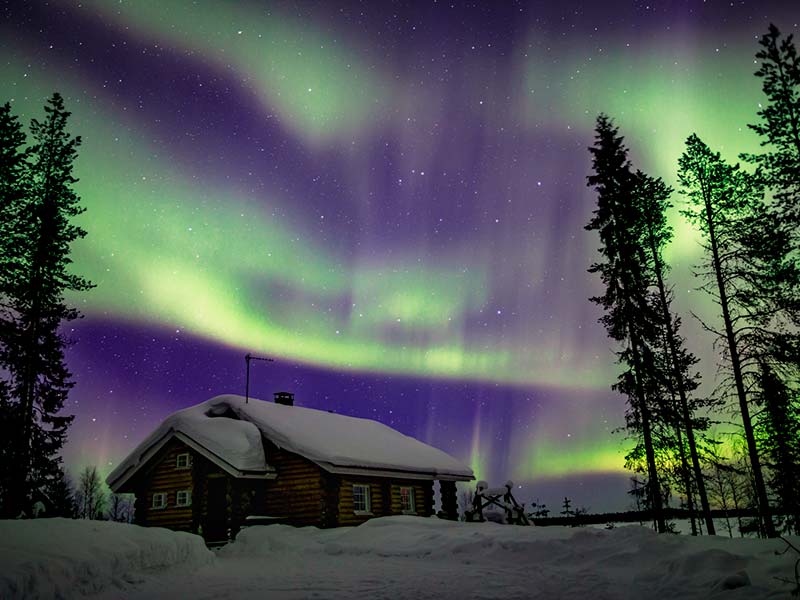
Driving yourself does have some downsides, however, such as:
- Expensive. If you’re looking to view the Aurora borealis on a budget, renting a car might not be the best way to go. Not only do you have to pay the rental fee, but you have to fuel up the vehicle, too, and finding gas stations can be difficult.
- Lost knowledge. Taking a car on your own instead of touring with an experienced guide means you miss out on the knowledge and experience the guide has to offer.
- Possibly dangerous. Winter roads can be treacherous, especially in an area you aren’t familiar with. Driving on your own on icy, snowy roads may not be your idea of a relaxing vacation.
- Unpredictable. If you’ve never been to see the lights before, trying to navigate to the ideal place on your own can be challenging. You may miss them altogether!
On a Boat
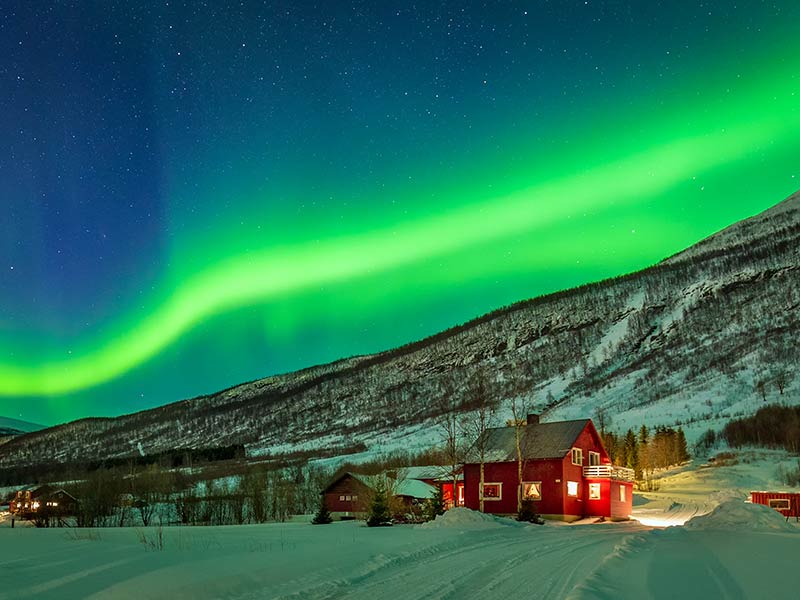
What better way to view the Northern Lights than surrounded by water so you can see the show over your head and under your feet?
There are a variety of boat tours throughout the region, giving you the opportunity to see the lights and enjoy the scenery without much interruption. And, if you’re lucky, you may just catch a whale or some other wildlife!
Some pros to taking a boat tour include:
- Some mobility. While you won’t be as mobile as if you drove yourself or were on a tour, you definitely have more flexibility than in a town.
- Less light pollution. Out on the water, it can feel as if the darkness swallows you quickly. This is a benefit when you’re trying to get as much contrast as possible between your surroundings and the Aurora borealis.
- Extra perks. You never know what you’re going to see out on the water. You’ll always be surrounded by the beauty of the landscaping on the shore, but you may even get a visit from a whale depending on when and where your tour happens.
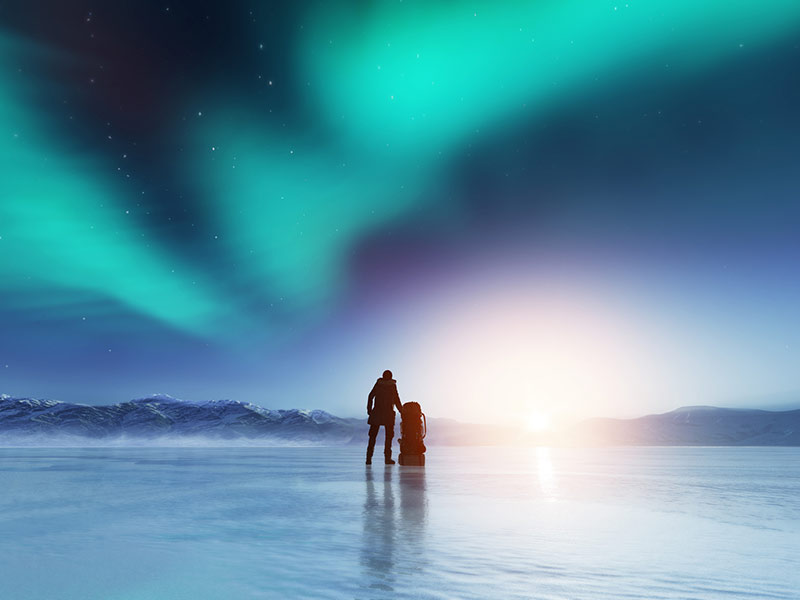
There are some drawbacks to boat tours, such as:
- Price. Just like a tour by bus or car, a boat tour is one of the more expensive ways to view the lights.
- More people. It may be difficult to find a private boat tour, which means you’ll be on a boat with other tourists. This could bring more noise than some travelers may like.
- Limited availability. Because boat tours require water, accessing one means you’re more limited in your choice of viewing location.
More Iceland Travel Guides
Iceland is a nation full of beauty and adventure: the perfect combination for your next holiday. The Northern Lights in Iceland are a fantastic experience, but why stop there? Check out some of the other wonderful destinations that Iceland has to offer:
- Blue Lagoon: The Ultimate Travel Guide
- Iceland Hot Springs: Top 10 Natural Hot Springs
- Top 10 Best Things to Do in Reykjavik
- Top 11 Things to Do in Iceland
The Best Iceland Northern Lights Tours
Whether you’re looking for a short one-day excursion or a multi-day guided tour, the experienced professionals at Hekla can show you the time of your life.
We offer Iceland vacationing options for individuals, large families, students, and companies that you’ll never forget. Book your tour today!

